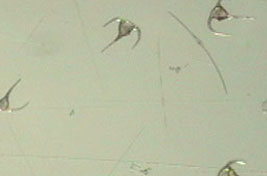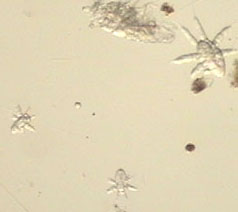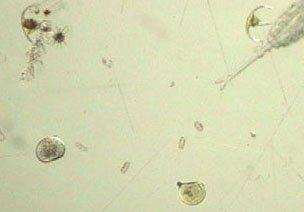
 |
|
Our Data...Organisms |
|
|
Cruise Activity #5: Summarize our data on organism diversity. A printable Organism Diversity Data Sheet is provided to guide your note taking. You will have to print out several copies of the Data Sheet in order to collect all of our data on organism diversity. If you do not have Adobe Acrobat or another way to view PDF files, click here to download the free software. |
|
Our days at sea allow us to observe some fascinating organisms that many of us have probably never seen before! Let's take a look at the diverse organisms we find at our three stations. |
|
Continental Shelf |
Happily, we had clear weather at the continental shelf station at Wilkinson Basin (Gulf of Maine). We saw many types of birds, especially gulls and petrels. Dolphins and sea lions were spotted, much to everyone's excitement. |
 |
|
|
|
|
|
|
Although sparser than the "Upwelling Station" net tow, this station had many species. Two types of Ceratium (a dinoflagellate) were observed; these are the triangular and "bow-shaped" organisms ). |
|
 |
|
|
"Needle-like" Rhizosolenia were the dominant diatom (left). We also found a few "hockey puck" shaped diatoms called Coscinodiscus (right). |
 |
| Many copepods (below and right) that are common in the world's oceans, were present at this station. The brown masses are fecal pellets.
|
|
 |
 |
In addition to adults, copepod nauplii were commonly observed (left). A few veliger ("blob-like" larval bivalves), and radiolaria ("star-like" zooplankton) were also seen (right). |
 |
|
We also spotted some small shrimp (below), and some pteropods or planktonic snails (right).
|
|
Although we didn't catch any to take a picture, we also saw a few squid at this station.
|
| Our slide-making revealed a lot of nanoplankton....
|
.....and picoplankton!
|